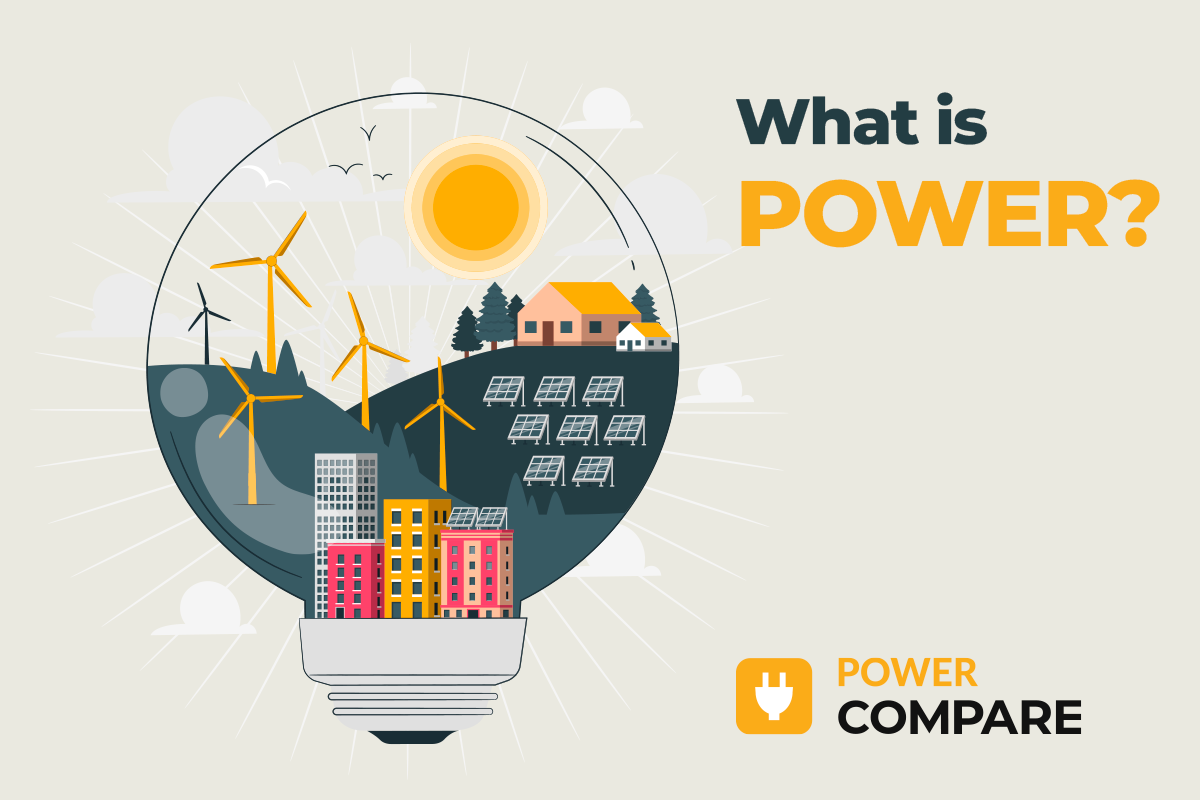What is Power?

Power has been, arguably, at the heart of humanity’s development and evolution. It is the key ingredient for economic growth and has fuelled the production of society and prosperity. We use it all day, every day to heat and cool our homes, charge our devices, and cook our food. But what exactly is power?
Let’s take a deep dive into the fundamentals of what power and electricity truly is and where it has come from throughout history.
Fire to Coal
Mankind discovered how to make fire 32,000 years ago. For centuries, this remained the primary source of energy. The Greeks, however, discovered static electricity around 600 BC, by rubbing amber and silk together. The Greeks were certainly advanced, but other regions were ahead of them in many ways. China had mined coal since 3490 BC, using it to heat and cook. By the 2nd century AD, the Romans sourced their coal from Britain. However, upon the fall of the Roman Empire, coal production declined as society slipped into the grittiness of the Middle Ages. In this long, gruelling era, people turned to firewood, charcoal and muscle power from animals and humans to fuel energy.
Development of Grid Systems
In the 1870s, the first power grid was developed, promising power to factories in England. It connected the energy generation sources with end-use. These smaller current power systems dominated the market, largely used in industrial production. The generation plants were mostly steam engines fuelled by coal and hydroelectric power. A decade later, households from all classes soon had access to electricity in their homes, thanks to the development of the first grid system, which was designed to transmit electric power over a greater distance. In New Zealand, our grid is owned and operated by Transpower.
A Simple Switch on the Wall
It has now been a long time since many communities across the world have had to burn wood or charcoal to heat their homes. Since the invention and development of electricity, we simply plug in an appliance or flick a switch at the wall.
So, What is Electricity?
Electricity is a type of energy that can build up and remain in one place, or move from one place to another. This electricity flows from the energy source along wires – such as the power lines you see on our roads – and into our devices and appliances, lighting up LEDS, charging our phones, and powering our TVs.
Where does your power come from?
The Age of Renewable Energy saw a variety of sources for power. Now, New Zealand homes are powered by electricity sourced from different places. Although, NEw Zealand still produces a small amount of non-renewable energy due to their reliability, especially when other sources are not so plentiful.
Solar
The power of the sun in the heart of your home. Solar energy has had a slow start into the energy production industry. This is a clean, green energy option that harnesses the immense power of the sun, and converts it into electricity.
Wind
Wind farms are likely going to lead the way in clean, green energy in future New Zealand. There are 19 wind farms installed in gusty regions, which boast producing about 5 percent of all electricity in New Zealand. The force of the wind spins turbine blades and converts that energy into electricity. The faster the blades spin, the more electricity is produced. This is a great greenhouse gas free electricity source.
Hydro
Dominating New Zealand’s electricity generation industry, hydropower accounts for about 57 percent of the country’s generated power. It works by using gravity to force water through enormous turbines, and converting that energy into electricity – similarly to wind power.
Geothermal
New Zealand has unique access to the potential geothermal power beneath the Earth’s crust, since the country sits upon two tectonic plates. Geothermal power stations direct geothermal fluid to a centralised plant, and pushes it through turbines. As they spin, they create electricity.
Thermal
While the least environmentally-friendly, this is generally the most reliable and predictable type. Thermal plants rely on burning fossil fuels such as coal, diesel or gas to generate electricity.
Did you know it’s easy to lower your power bill?
Comparing power providers and plans is a wonderful and easy way to reduce your electricity bill. Power Compare makes it easy to compare different providers and plans side-by-side, so that you can choose the best offer to suit your needs and budget. Comparing, and making the switch to a better offer means you can save hundreds of dollars in the long term on power, while getting more value for your money.
To do so, follow these simple steps:
- Go to Power Compare
- Type in your address
- Hit enter.
- Browse all the different plans available to you & compare them side-by-side.
- Find one you like and switch!
Or, if you’d prefer to speak to a friendly person, then give our customer service team a free call on 0508 22 66 72. They offer bias-free and hassle-free advice on power providers available to you.
From the team at NZ Compare, we wish you a wonderful, safe and sunny summer!

